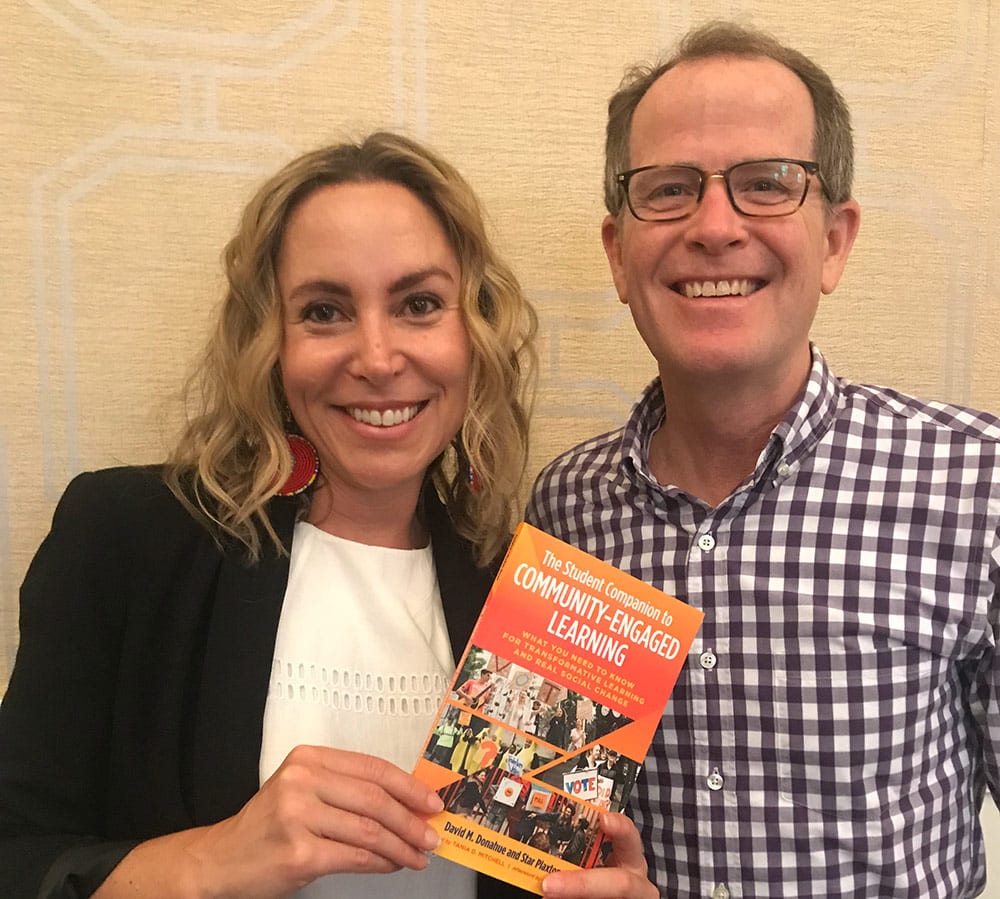
Student Companion to Community-Engaged Learning
I am thrilled to share the outcome of a collaborative project between myself and McCarthy Center Director, Dave Donahue, that has been years in the making! The Student Companion to Community-Engaged Learning: What You Need to Know for Transformative Learning and Real Social Change is a book designed for students to read in the first days or weeks of their community-engaged courses. The book leads students through a discussion of why and how to engage deeply and meaningfully with communities experiencing pervasive marginalization and injustice. Students will learn about the root causes of, and connections between, social justice issues and how individuals, groups, and organizations are mobilizing to address these issues. The book provides guidance about opportunities and responsibilities that come with being a community-engaged student and suggests dispositions and practices meant to maximize learning for the student and benefits for the community.
The idea for this book came from practical experience and an observed lack of scholarship on this topic in the field of service-learning and community engagement. As a community engagement professional, I’ve spent the past 13 years supporting faculty, students, and community partners. Each semester, when the community-engaged courses would come to an end, and I debriefed with these various groups, common themes arose. In general, there was a desire to make sure students were more prepared to enter the community with humility, respect, and open-mindedness.
Faculty and community partners wanted students to shed the savior complex that commonly infuses service activities, and instead embrace their roles as apprentices to the community members leading positive change in their communities. Community partners said it would be helpful for students to do some basic internet research to learn about the organization, neighborhood, and client demographic that they serve. They also wanted students to practice a basic level of professionalism. Faculty wanted students to be primed to function as participant observers, actively connecting their community experiences to course content and integrating new experiences to inform their worldviews. In addition, students would often lament, upon reflection, that they could have made more of their experience if they had some key info at the beginning. For example, Meghan, a student in an undergraduate community-engaged course, reflected that she wished she would have been encouraged to interact meaningfully and build relationships with the staff and clients at her host organization early on. She described how it took her several weeks to realize she could learn more from conversations with the people at her host site than from exclusively focusing on the service tasks. How much more could Meghan have learned if she went into her first day at her host site with a desire to connect with people and learn their stories in addition to participating in service activities?
The service-learning and community engagement literature is filled with scholars exhorting faculty and practitioners to prepare students for entering and interacting with the community. However, this topic was never addressed with sufficient depth to guide a general set of themes for student orientation. Our hope is that this book addresses a gap in the field and responds to the insights and experiences of our brilliant, dedicated, and critical colleagues and students.

